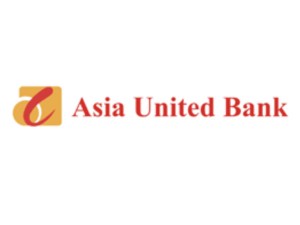
AUB, which aspires to be among the country’s top 10 banks in terms of resources within the next five years, expects to close another banking acquisition within the year and grow its loan book by at least 30 percent each year.
The bank’s shares rose by 9 percent from its initial public offering price of P95 per share to P103.60 per share in morning trade even as the main-share Philippine Stock Exchange index slipped by 0.73 percent as of mid-day. AUB was the most actively traded company in the morning.
AUB sold 80 million shares, raising P7.6 billion from this initial public offering. Including the overallotment option of eight million shares, which is expected to be exercised given strong demand for the offering, the deal size was expected to increase to P8.36 billion.
The offering was oversubscribed by about five times the base offer, reflective of the bullish stock market. Of the P7.6 billion IPO, 60 percent was taken up by foreign investors and 40 percent by domestic investors. The domestic allotment was increased from the original share of 30 percent to cope with demand, AUB first vice president Andrew Yap said.
“It’s a good showing for the stock on its first day. It’s continuing the trend of successful IPOs since last year. This shows that Philippine equities are still in demand, which is why the market has accepted AUB on its prospects of becoming a universal bank,” said Joseph Roxas, president of Eagle Equities Inc.
With this fresh capital from the IPO, AUB president Abraham Co said in a press briefing after the listing ceremonies that the bank would likely end up with an “indecent” capital adequacy ratio to risk assets of 25 percent based on Basel 3 framework, which will take effect by January 2014.
Under the Bangko Sentral ng Pilipinas framework for Basel 3, required common equity Tier 1 ratio will be set at a regulatory minimum of 6 percent while the total Tier 1 ratio will be at a 7.5 percent minimum.
Basel 3, a new global framework for capital adequacy which introduces a complex package of reforms designed to improve the ability of banks to absorb losses, extend the coverage of financial risks and have stronger firewalls against periods of stress.
AUB’s 25-percent post-offering capital adequacy ratio is thus seen as “indecent” versus the much lower regulatory requirements. “We have to utilize our capital,” Co said.
Co said the bank would indeed have to increase assets and apart from organic growth, a new acquisition—potentially the fourth in the 15-year-old bank’s history—may happen this year, Co said.